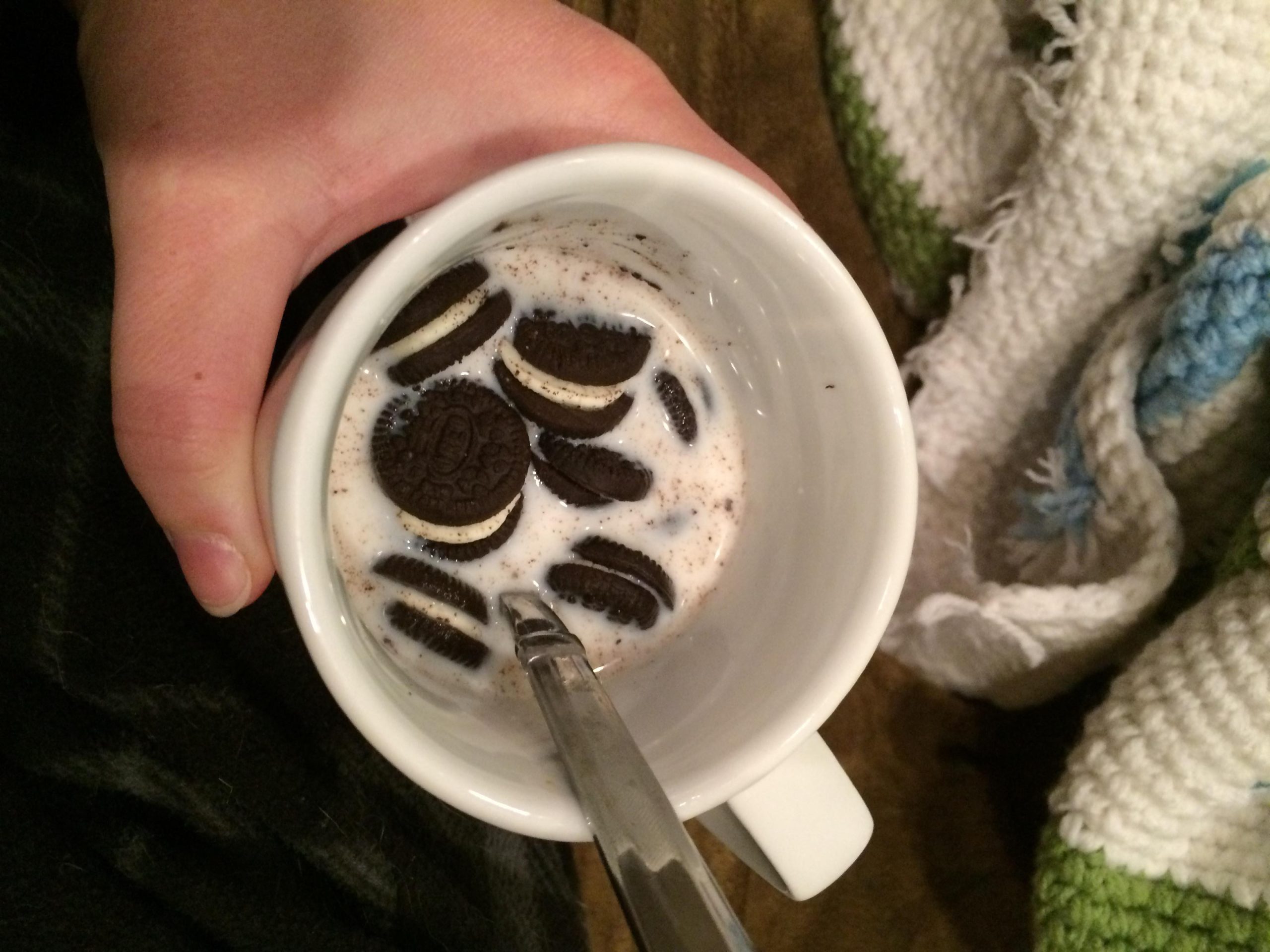The Oreo cookie was first introduced by the National Biscuit Company (now known as Nabisco) on March 6, 1912. It was created as a competitor to the Hydrox cookie, which was already on the market. The original Oreo consisted of two round chocolate-flavored wafers with a sweet cream filling in between.
The origin of the name “Oreo” is uncertain, but it is believed to have been derived from the French word “or,” meaning gold, which reflects the early packaging design that featured a gold-colored tin. The distinctive design of the Oreo cookie, with the embossed Nabisco logo and the scalloped edge, was inspired by the logo of the Keystone, a symbol of quality used by Nabisco at the time.
In the early years, the Oreo underwent some changes. The design was altered to have the Nabisco logo with a wreath surrounding it. The original filling was made with lard, but in the mid-1990s, Nabisco replaced it with a partially hydrogenated vegetable oil-based filling.
Oreos quickly gained popularity beyond the United States. In 1921, they were introduced in Canada, followed by other countries around the world. Today, Oreos are available in over 100 countries, with regional adaptations and flavors to cater to local preferences.
Oreos have become more than just a cookie; they have become a cultural phenomenon. The cookie has been featured in advertising campaigns, movies, and popular culture references, solidifying its status as a household name and a symbol of childhood nostalgia for many.
When it comes to enjoying a delicious treat, Oreos often take the spotlight. These iconic sandwich cookies have been delighting taste buds for over a century. The act of dunking Oreos in milk has indeed become a beloved tradition for many Oreo enthusiasts.
While dunking Oreos in milk is a common practice for many, there are some individuals who prefer to enjoy them in a different way. In this article, we’ll explore ten reasons why some people choose not to eat Oreos with milk.
- Personal Taste Preferences: Taste preferences vary greatly from person to person. Some individuals may simply prefer the texture and flavor of Oreos without milk. Whether they enjoy the crunchiness of the cookie or the rich cream filling, everyone has their own unique tastes and preferences.
- Lactose Intolerance or Dairy Allergies: A significant portion of the population is lactose intolerant or allergic to dairy products. For these individuals, consuming milk can lead to uncomfortable symptoms such as bloating, diarrhea, or stomach cramps. As a result, they choose to enjoy Oreos without milk as a lactose-free alternative.
- Dietary Restrictions or Choices: Certain dietary choices or restrictions may play a role in avoiding milk with Oreos. People following a vegan lifestyle, for instance, abstain from consuming any animal-derived products, including milk. Instead, they may opt for non-dairy alternatives like almond milk, soy milk, or oat milk.
- Preservation of Oreo Crunch: Dipping Oreos in milk can cause the cookies to soften and lose their initial crunchiness. Some individuals appreciate the distinctive texture of a crisp Oreo and choose to savor that experience without the added moisture from milk.
- Concerns About Sogginess: While dunking Oreos in milk is a beloved tradition for many, it can also lead to sogginess. Some people dislike the softened texture that occurs when the milk seeps into the cookie. By keeping milk separate from Oreos, they can maintain the desired level of crunchiness.
- Portion Control: Enjoying Oreos without milk allows for greater control over portion sizes. When paired with milk, it can be easy to consume more cookies than intended, as the milk can make the experience more enjoyable and addictive. By eating Oreos separately, individuals can manage their portions more effectively.
- Snacking on the Go: In today’s fast-paced world, convenience plays a significant role in our food choices. Enjoying Oreos on their own eliminates the need for milk, making it a more portable and convenient snack option for those on the go.
- Alternative Pairings: Some people simply prefer to pair Oreos with alternative beverages or accompaniments. Coffee, tea, or even a glass of water can provide a different flavor experience that complements the cookie’s taste in a unique way.
- Preservation of Individual Flavors: By eating Oreos without milk, individuals can focus solely on the distinct flavors of the cookie itself. The absence of milk allows them to appreciate the sweetness of the cream filling and the chocolatey taste of the cookie in their purest forms.
- Unconventional Experiments: Finally, some individuals enjoy experimenting with food combinations and pushing the boundaries of traditional norms. For them, breaking away from the classic Oreo-milk pairing can be a way to explore new tastes and textures.
Alternatives
If you’re looking for alternatives to milk to enjoy with your Oreos, there are several options available. Here are a few popular choices:
- Non-Dairy Milk: There is a wide range of non-dairy milk options available, which are derived from plants such as almonds, soybeans, tiger nuts, coconuts, oats, rice, and hemp. These milk alternatives have a variety of flavors and textures, so you can choose the one that suits your preferences. Some common non-dairy milk options include almond milk, soy milk, coconut milk, oat milk, and rice milk.
- Nut-Based Milk: Almond milk, cashew milk, and hazelnut milk are examples of nut-based milk alternatives that can be enjoyed with Oreos. They have a creamy texture and a slightly nutty flavor that can complement the cookie.
- Soy Milk: Soy milk is a popular plant-based milk alternative. It has a smooth and creamy consistency, and its mild flavor pairs well with Oreos.
- Coconut Milk: Coconut milk is a rich and creamy option that can add a tropical twist to your Oreo experience. It has a distinct coconut flavor that can complement the chocolatey taste of the cookies.
- Oat Milk: Oat milk has gained popularity in recent years due to its creamy texture and slightly sweet flavor. It is a great option for those who prefer a milder taste with their Oreos.
- Flavored Milk Alternatives: Some milk alternatives come in flavored varieties, such as vanilla, chocolate, or strawberry. These can add an extra layer of flavor to your Oreo-dipping experience.
Ultimately, the choice of milk alternative depends on your personal preferences and dietary restrictions. Experiment with different options to find the one that you enjoy the most with your Oreos.
Conclusion
While dunking Oreos in milk is a popular and cherished practice, there are valid reasons why some people choose not to do so. Whether it’s due to personal taste preferences, dietary restrictions, concerns about sogginess, or simply a desire for experimentation, everyone has their own unique way of enjoying these delectable cookies. Ultimately, the joy of eating Oreos lies in savoring their irresistible flavors, whether accompanied by milk or not.





